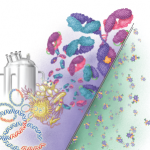
PARIS, FRANCE—Questions about biosimilars bring tremendous uncertainty to the world of rheumatology therapies, and a group of experts tried to shed light on the topic at the Annual European Congress of Rheumatology (EULAR 2014) in June, providing insights into the production of biosimilars, their regulation and potential economic effects.
Joao Goncalves, PhD, associate professor of pharmacy at the University of Lisbon, Portugal, who has helped write a position paper on the use of biosimilars for the Portuguese Society of Rheumatology, said the production of biosimilars is fraught with challenges. That the companies attempting to create them have a model to follow is only so helpful, he said.
“The biosimilar companies do not know anything about how to produce the original molecule,” Dr. Goncalves said. “They only know the sequence of the drug. They have to develop a completely innovative production method.”
These companies have to solve the problems of that production method, analyze the characteristics of the drug, analyze its mechanism of action and confirm the clinical biosimilarity.
The assessment of biosimilars has to take into account new scientific understanding of how monoclonal antibodies work—insights that weren’t known 15 years ago when the original anti-tumor necrosis factor hit the market. Most importantly, he said, is the role of glycosylation.
That is not nearly as simple as creation of a generic to an existing drug.
“When you have a generic, everything is equal,” Dr. Goncalves said. “For a biologic, it’s different—we have many possible isoforms. And the process really makes the product.”

Focus on Similarity
Inevitably, there is “passive drift,” the subtle changes over time—but acceptable to regulatory agencies—that occur with such complex compounds. But in the production process, the drug companies also insert their own “active drift”: the changing of tubing, relocating equipment or adding a new cell line.
The main idea, Dr. Goncalves said, is that the focus is on similarity and not de novo efficacy—if the similarity is present, then clinical results should follow.
The clinical upshot of biosimilars is that once the potential problems with biosimilars are identified, the risks associated with those problems can be described, and then those risks can be properly managed, Dr. Goncalves said.
Approved Biosimilars
Juan Esplugues, MD, PhD, professor of pharmacology at the University of Valencia, Spain, and an expert on biosimilars, pointed to the handling of the first two biosimilars of infliximab to illustrate the uncertainties involved in this new landscape.
In June 2013, the drug was approved by the European Medicines Agency for the same indications as Remicade, including rheumatoid arthritis (RA), Crohn’s disease and ulcerative colitis—based on data only on RA.
Then, in April of this year, Canadian regulators approved the drugs for RA, but not for Crohn’s or ulcerative colitis, because of differences in fucosylation and FC-gamma receptor binding and concerns about antibody-dependent cell-mediated cytotoxicity.
“I think the discrepancies between these two agencies highlight the point that we are very early in this game, and that we are dealing with very complex molecules that we have never tested before in such a setting,” Dr. Esplugues said. “And that therefore, they cannot be treated as generics. And the rules that we have set up and approved and evaluated in the last 25 years for generics, still cannot be used for these drugs.”
Hope at More Reasonable Prices
Dr. Esplugues repeatedly underlined the huge differences between generics and biosimilars, noting that the vast disparities in the molecular weights of aspirin and TNF blockers is like the difference between a scooter and a jumbo jet.
“We are testing the jumbo jet with regulations that were set up for the scooter,” he said.
He said clinicians can be assured that when new immunogenicity or new serious adverse events are seen, drugs will be stripped of their biosimilar privileges.
It will take time to fully and accurately define exactly what a biosimilar is—there are now three or four definitions put out by the European Medicines Agency alone, he said—but clinicians can nonetheless expect “high-quality regulation.”
“They will offer very good drugs, very successful drugs like TNF blockers at a more reasonable price,” he said, “therefore offering more hope to our patients.”
His position, he added, is “Let’s go” with the introduction of biosimilars, but with stringent requirements that can be strengthened or lessened over time, once there is more clinical evidence.
J.L. Severens, PhD, professor of evaluation in health care at the Institute of Health Policy and Management at Erasmus University Rotterdam, The Netherlands, said the likelihood that biosimilars will bring about significant change in health economics depends on more than just their ability to cut costs, but also on the quality of the new drugs themselves.
“There should be an explicit comparison of safety, effectiveness and costs to get the future picture of the economic consequences of a new technology in rheumatology,” Dr. Severens said. And models do exist to do that analysis.
However, he thinks that biosimilars will “not significantly” change the landscape of health economics.
Asked whether the costs alone should drive such an analysis, since biosimilars are based on therapies with prior approval, Dr. Severens said the evidence on biosimilars is not yet conclusive enough to allow that.
“Only when we are very, very sure about short-term outcome and long-term outcome can we stick to what we call cost-minimization analysis,” or strictly focusing on costs, he said.
Thomas R. Collins is a freelance medical writer based in Florida.



